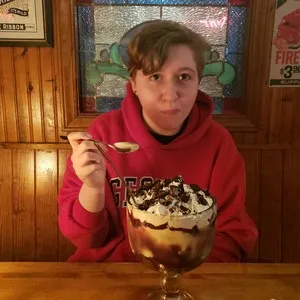I’ve always had an interest in homesteading. I dabble in it from time to time, and I enjoy it even if it takes hard work. From patching up socks to baking bread to growing vegetables, all of it has piqued my interest and become a bit of a hobby for me. The most recent thing I’ve turned my attention to is pickling and canning. I’m not too experienced, but I’m super excited about it and the results I achieved. Last weekend, I made pickles — a quick and simple recipe that will encourage you to make your own pickles like I did.
Quick Pickling or ‘Quickling’
The method that I chose to make my pickles was quick pickling, as opposed to long pickling, which is a very complicated and actually kind of dangerous process. If the pickles aren’t stored right, it can lead to diseases like botulism, which is deadly. That’s why I started out with quickling. The process is really easy and fun, and you get your pickles in just a few hours at the earliest rather than in a few months.
Quick pickling starts with creating a brine and then pouring it over the cucumbers and spices you are using, and then sticking the jars in the fridge. Immediately putting the jars in the fridge rather than sitting in a cool dark place to ferment is a lot safer because the cold of the fridge prevents the growth of bacteria.
The Brine
What separates quick brine from long brine is that quick brine always includes vinegar, which is what causes the pickling process to happen immediately. I used the brine from Southern Living, but I made a few adjustments. I doubled all the ingredients but the amount of sugar, I only used the single serving amount for that one. Also, I doubled approximately rather than exactly, using 5 tablespoons of salt instead of whatever the exact doubled amount would be, and using 2 ¾ cups of white vinegar. So, here’s what I used for the brine:

Pickle Brine
Ingredients
Instructions
You combine all this in a pot and cook until boiling, then pour your now-brine into your jar full of cucumbers. The amount of cucumbers you use depends on how you cut them and the size of the jar, but for my 16 oz jars, I used about two six-inch cucumbers cut in half both vertically and horizontally.
Spices and Herbs
What I like about pickling is that you can add whatever spices and herbs you want. I created two different jars of pickles as an experiment, one with just the brine and one with added herbs and spices. You’re going to want to let your cucumbers sit in ice water for about 3 hours before cutting them and putting them in the jar — this will make them nice and crunchy. When you jar them with herbs and spices, it’s best to layer the cucumbers and the spices instead of dumping all the spices either at the top or bottom of the jar.

My Basic Dill Pickles
Ingredients
Instructions
You should wait at least 5 hours before noshing on your homemade pickles, but you can wait up to four weeks if you’d like (I couldn’t wait that long to dig in). You’ll know your spiced pickles are ready when the brine has turned a dark olive green.
The unspiced pickles had a strong vinegar flavor, which I really enjoyed, and the spiced pickles had a subtle dill taste along with some complex deep flavors from the bay leaves and star anise. Another tip is you can reuse your brine for more pickles, although it may lose its flavor the longer you use it.



